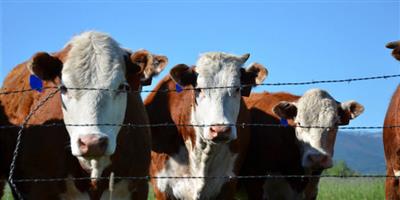by Anthony Bly, SDSU Extension Soils Field Specialist
Soil health is recently a new term that encompasses 17 soil quality indicators used for describing soil that is resilient against negative climatic events that cause water and wind erosion. The Natural Resources and Conservation Service (NRCS) formerly the Soil Conservation Service is the ultimate source for any term, process or analytical procedure involving soil. The NRCS has identified the 17 soil health indicators, which include biological, chemical and physical properties. It has been well documented and realized in this order that using no-till, diverse crop rotations that include cover crops and livestock integration are the complete package for ultimate soil health.
Livestock Manure: A valuable nutrient source for soil
Farm animals cycle nutrients through manure and are very important for soil health improvement. However, when plant and grain materials are removed from the soil and manure not returned to the field, valuable nutrients are removed and organic matter may decrease. Soil applied nutrients can be supplied from fertilizer but the soil organic matter could decrease causing the soil to be less productive. Using livestock to cycle nutrients is an important option for using soil nutrients and returning the organic portion back to the soil. Grazing livestock can also extend the period of residue break down during the cold periods when soil microbiology is greatly reduced. Some cattle producers are changing their feeding methods from harvesting and baling forages and storing them in a lot with resultant feeding in a confined area to one where the harvesting, baling, storing and feeding the forages occurs on the fields where it originated.
Benefits of Integrated Livestock & Crop Management
Jay Fuhrer with the North Dakota NRCS, has worked with many different livestock producers who use new methods for livestock feeding. Jay spoke at the South Dakota Soil Health Challenge in Ft. Pierre SD on January 21, 2016 and presented innovative livestock feeding methods. One livestock feeding method that Jay presented showed a North Dakota Ranch that harvests hay forage, stores and feeds the forage in the field where it originated (Figure 1). This method prevents export of soil carbon. Another feeding method, shows the soil health and nutrient benefits of cover crops and the added benefits of grazing the cover crops (Table 1). The Solvita and carbon tests are important soil health indicators. Solvita estimates the relative level of microbial activity and carbon is the foundation of soil organic matter. More microbial life and carbon in the soil assist with greater nutrient cycling and building of strong aggregates that help soil be more resilient against climate extremes. The soil health and nutrient improvements are accomplished because of the nutrients and organic material (carbon) that is returned to the soil where the forage was gathered. The combination of integrating innovative forage and livestock management practices contributes to improved soil health and nutrient levels which further increases crop and forage productivity.
Table 1. Jay Fuhrer (USDA/NRCS) data from on farm/ranch research in North Dakota, 2015.
| Soil Property | Wheat Stubble | + Cover Crop (CC) | + (CC) and feedingE |
| Solvita (ppm Carbon)A | 39.8 | 54.5 | 68.7 |
| Total Organic CarbonB(ppm) | 239 | 301 | 325 |
| Nitrate-Nitrogen (lbs/a) | 42.6 | 74.8 | 130.4 |
| Phosphorus (lbs P2O5/a)C |
22.3 | 33.2 | 37.6 |
| Potassium (lbs K2O/a)D | 120 | 187.9 | 234.6 |
| AEstimate of potential soil microbial respiration. More is better. BSoil Carbon is the stable foundation of organic matter. More is better. CEquivalent to phosphorus contained in fertilizer materials. DEquivalent to potassium contained in fertilizer materials. ECows grazed cover crop. |
|||
Source: SDSU iGrow
Photo courtesy of USDA NRCS. Cows grazing in Gallatin County, Montana. June 22, 2011.


